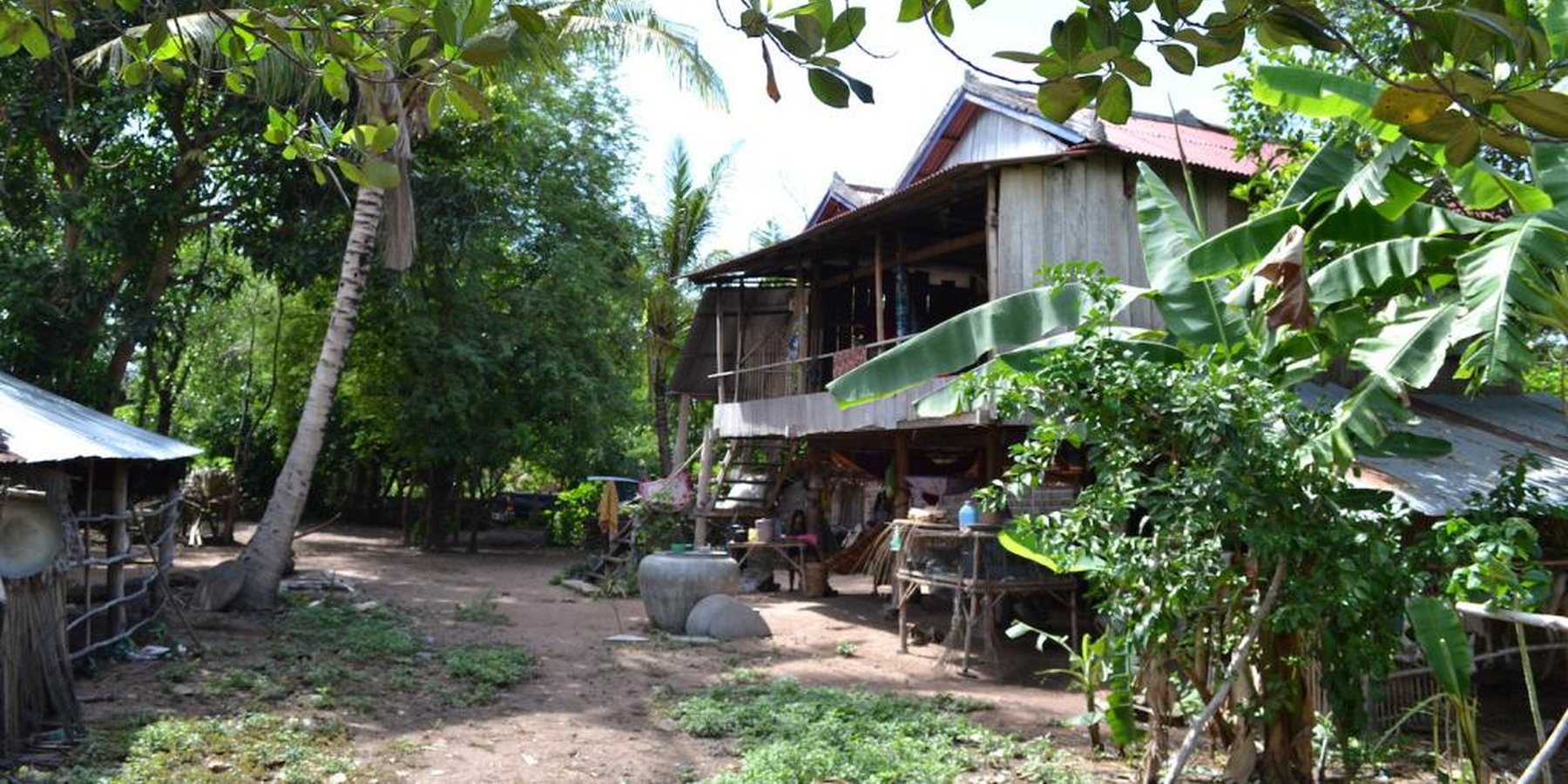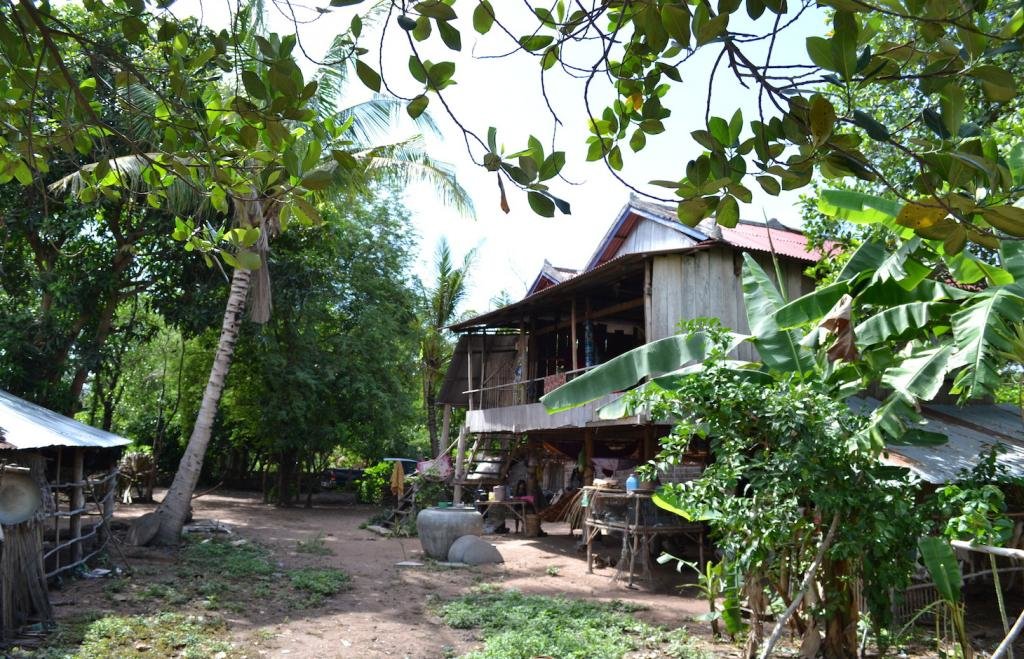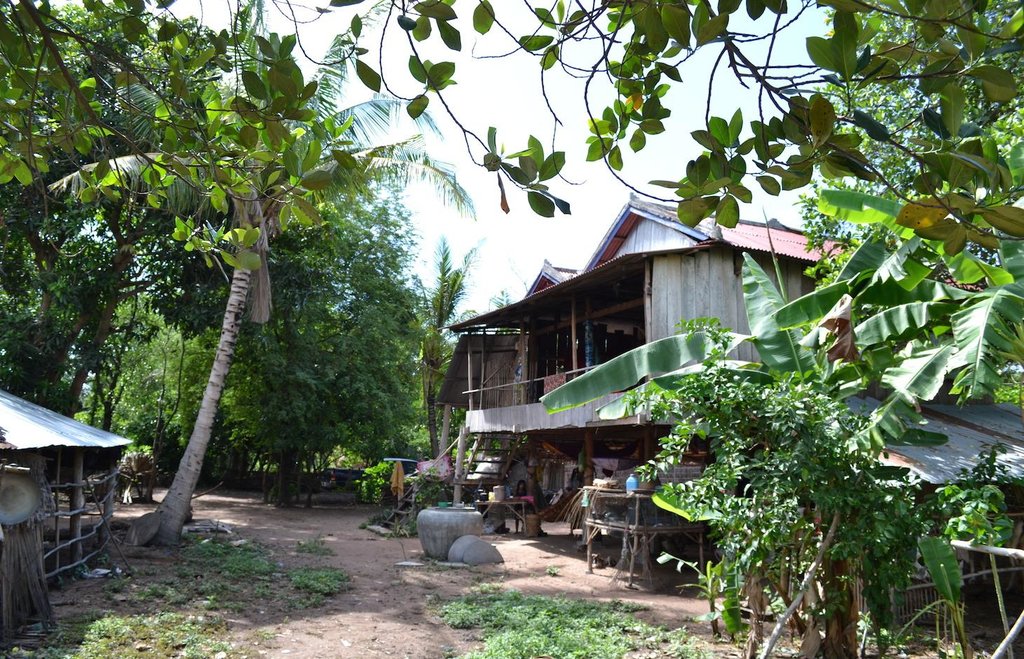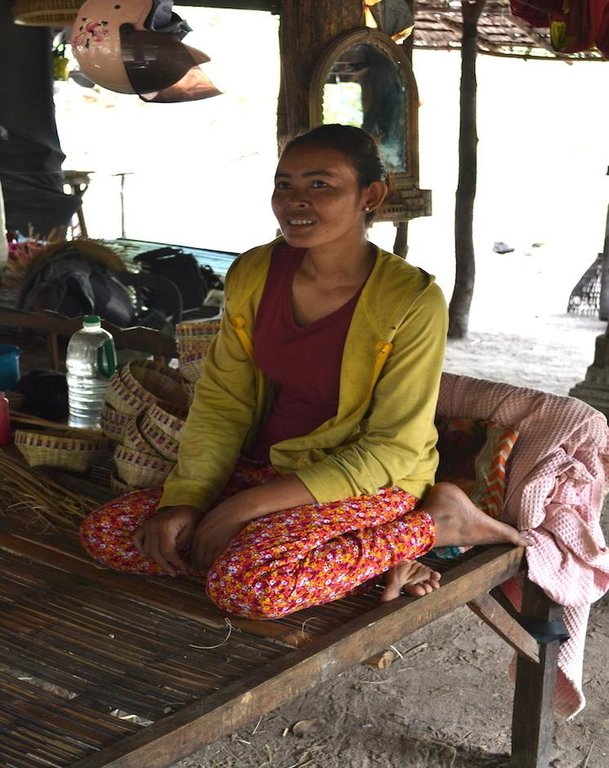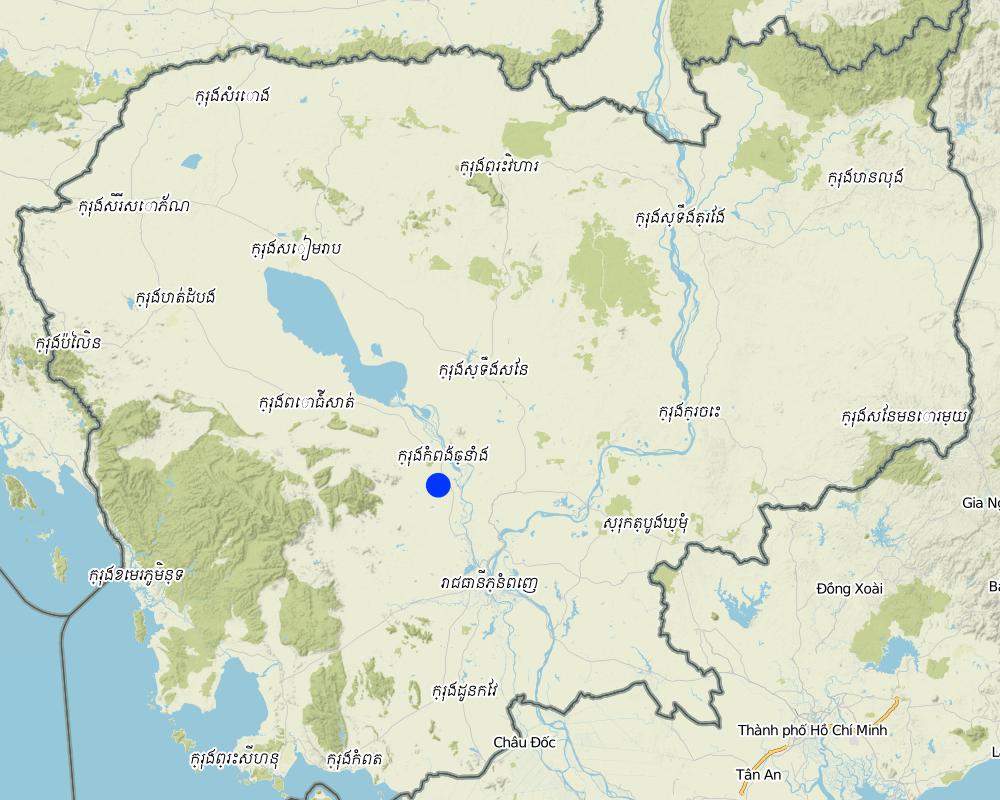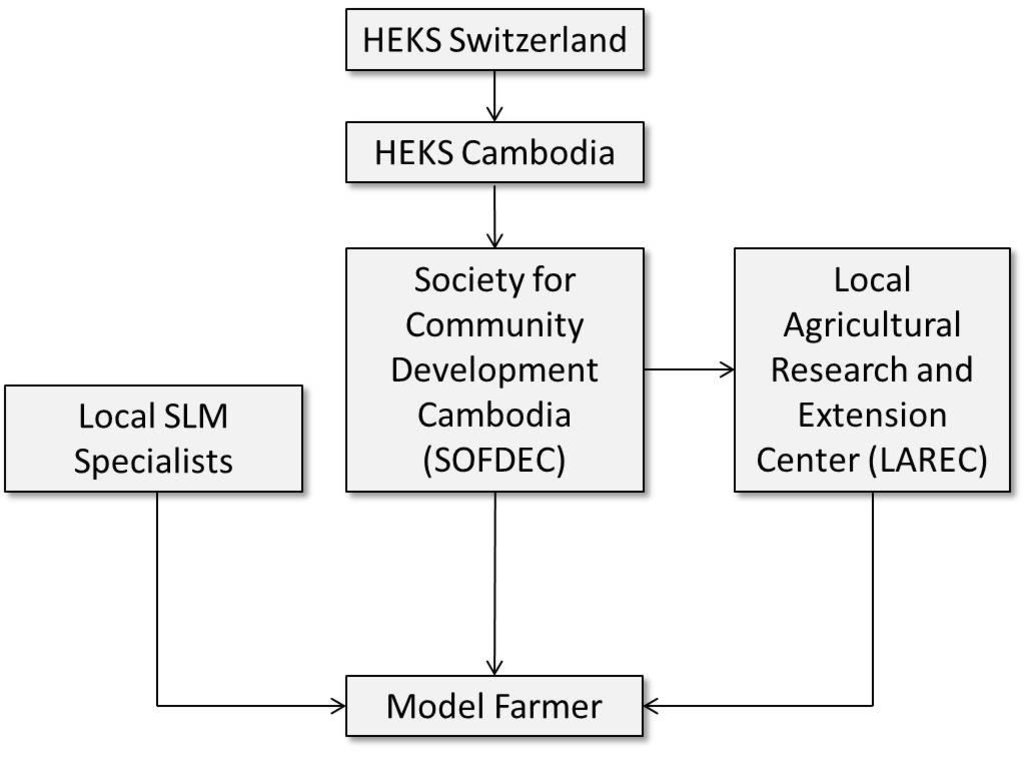Model farmer [柬埔寨]
- 创建:
- 更新:
- 编制者: Christoph Kaufmann
- 编辑者: –
- 审查者: David Streiff
approaches_2498 - 柬埔寨
查看章节
全部展开 全部收起1. 一般信息
1.2 参与方法评估和文件编制的资源人员和机构的联系方式
SLM专业人员:
SLM专业人员:
Say Mesa
Society for Community Development in Cambodia
柬埔寨
SLM专业人员:
Bin Sreytouch
Society for Community Development in Cambodia
柬埔寨
SLM专业人员:
Khun Lean Hak
SOFDEC/LAREC
有助于对方法进行记录/评估的机构名称(如相关)
Local Agricultural Research and Extension Centre (LAREC) - 柬埔寨有助于对方法进行记录/评估的机构名称(如相关)
Society for Community Development in Cambodia (SOFDEC) - 柬埔寨有助于对方法进行记录/评估的机构名称(如相关)
CDE Centre for Development and Environment (CDE Centre for Development and Environment) - 瑞士1.3 关于使用通过WOCAT记录的数据的条件
(现场)数据是什么时候汇编的?:
25/06/2014
编制者和关键资源人员接受有关使用通过WOCAT记录数据的条件。:
是
1.4 SLM技术问卷的参考
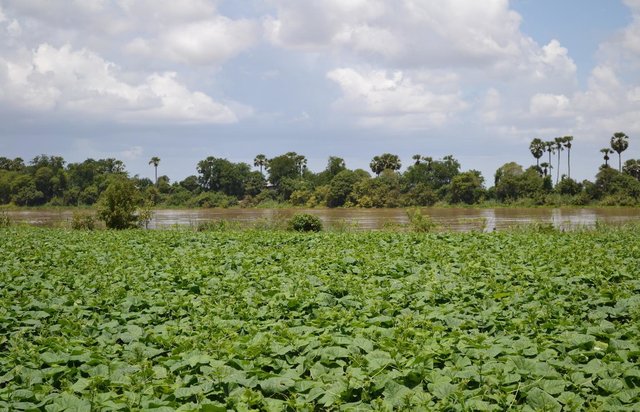
Mulching with water hyacinth (Eichhornia crassipes) after the … [柬埔寨]
Water hyacinth (Eichhornia crassipes) is collected during the monsoon floods, attached to poles on the flooded fields, chopped when the water recedes and used as mulch to plant different crops.
- 编制者: Christoph Kaufmann
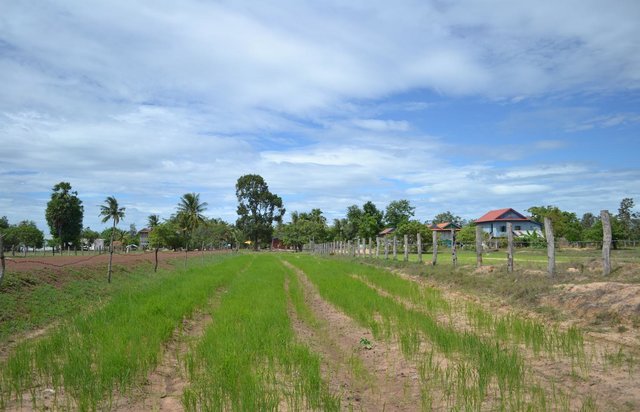
Adapted System of Rice Intensification (SRI) principles in … [柬埔寨]
Some points of the System of Rice Intensification (SRI) technology, like the row transplanting of young seedlings and the use of compost are adapted and applied in Kampong Chhnang.
- 编制者: Christoph Kaufmann
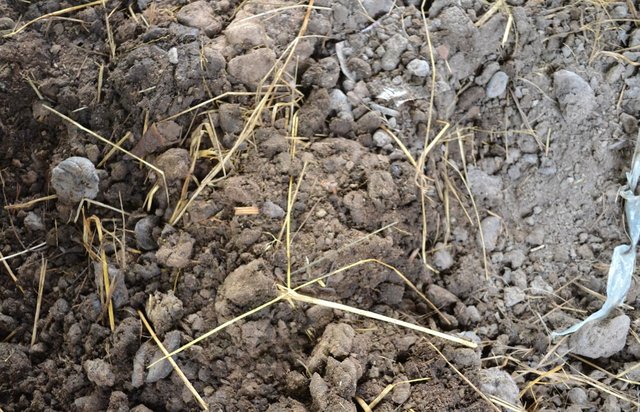
Compost application on rice fields [柬埔寨]
Manure, leaves and rice straw are gathered in a compost house and the produced compost is applied twice a year to the rice field.
- 编制者: Christoph Kaufmann
2. SLM方法的描述
2.1 该方法的简要说明
Model farms were introduced by a NGO in order to spread knowledge about SLM (compost, System of Rice Intensification SRI, and other technologies) in the project area.
2.2 该方法的详细说明
该方法的详细说明:
Aims / objectives: Model farms were introduced to Kampong Chhnang Province in order to spread knowledge about SLM Technologies.
Methods: The Approach focuses on various areas of farming, and the model farms are clustered into 4 groups:
1. Compost and System of Rice Intensification focus on rice productivity and soil improvement.
2. SLT (Seasonal Long Training) – growing techniques for different crops, seedling germination, care taking, harvesting, etc.
3. INTEREST – focus on different crops which are mixed, crop rotation (rice-watermelon-corn, e.g.), mulching, cover cropping.
4. Cow raising model farmers – focus on fodder production, vaccination, supplementary feed for the cows, stable construction.
In this case study, the model farmer applies the System of Rice Intensification (SRI) and compost (cluster 1).
Stages of implementation: Becoming a model farmer consists of different steps. First, different land users who dispose of the required inputs (certain amount of land, labour availability, motivation for innovation) are invited to a training organized by a local NGO. After the training, the model farmers are chosen amongst the participating land users. These newly elected model farmers get further training from the NGO. While implementing the selected Technologies (in this case SRI and compost), the model farmers are subsidized and monitored by the NGO.
Role of stakeholders: The role of the stakeholders is both active and passive. While they are invited to the initial training provided by the local NGO (passive), the land users decide - once they're selected as model farmers - by themselves which Technologies they want to apply on their fields (active).
Other important information: The benefits of this Approach are manifold. Firstly, it helps spreading knowledge about sustainable land management in the project area. In the case of Cambodia this is especially important since much of the agricultural knowledge was lost during the Khmer Rouge regime (1975-1979). Furthermore, the soils in the project area are sandy and show a low fertility. Therefore for example compost making can have a positive long term impact on both the natural and the human wellbeing. Secondly, model farmers can have a positive impact on local institutions. It is for example possible for the farmers to give a report to local authorities where they state what the villagers need most. Furthermore, model farmers can become members of NGOs or local authorities, or monitor other farmers in their activities.
The main disadvantage of the Approach is the problem of sustainability. Model farmers are in close cooperation with the local NGO, and if the NGO stops the coaching, it is not ensured that the implemented Technologies will continue. This is illustrated by many abandoned compost houses in the area. Also, the interviewed model famer expressed that since she became a model farmer, there is more work to do. This can be detrimental in an environment where a high migration rate decreases the available labour force. Last but not least the decision about which Technologies are to be applied on the given model farms are mainly taken by the SLM specialists working for the local NGO. If land users were more involved in the decision-making process, this might have a positive long term impact on the farmers motivation to continue applying the chosen Technologies independently (sustainability).
2.3 该方法的照片
2.5 采用该方法的国家/地区/地点
国家:
柬埔寨
区域/州/省:
Kampong Chhnang
有关地点的进一步说明:
Rolear Pha-er
注释:
For one model farmer, there are approximately 5 other farmers who copy the technologies
Map
×2.6 该方法的开始和终止日期
注明开始年份:
2006
2.7 方法的类型
- 基于项目/方案
2.8 该方法的主要目的/目标
The Approach focused on SLM only
On one hand, land users learn about new technologies (e.g. compost, SRI) which have a positive impact on the yields, the soil fertility and in consequence on the income. On the other hand, model farmers are enabled to show these technologies to other land users (knowledge sharing) so these technologies can be spread in the area. One way to share the knowledge are farmer field days where other land users visit the model farms.
The SLM Approach addressed the following problems: Lack of technical knowledge, low agricultural production, low soil fertility.
2.9 推动或妨碍实施本办法所适用的技术的条件
法律框架(土地使用权、土地和水使用权)
- 启动
The current situation of land use rights and ownership is rather complicated since there are different perceptions coexisting. Therefore, no concluding statement about the influence of this situation on the implementation of model farms can be made.
- 阻碍
The process of formalizing land use rights in Cambodia is slow. No relationship between this Approach and land use rights.
了解SLM,获得技术支持
- 阻碍
Other farmers did not have technical knowledge about the technologies
Treatment through the SLM Approach: Farmers could learn from the model farmer, monitoring can help to maintain the best practices.
3. 相关利益相关者的参与和角色
3.1 该方法涉及的利益相关者及其职责
- 当地土地使用者/当地社区
Model farms were installed on existing farms.
The involvement of socially and economically disadvantaged group is indirect. They are not selected as model farmers since they don’t have the necessary inputs. However they can benefit from farmer field days or from talking to a model farmer in order to learn about the new technologies.
- SLM专家/农业顾问
- NGO
Society for Community Development in Cambodia SOFDEC
- 地方政府
The Provincial Department of Agriculture PDA was informed about the approach by SOFDEC.
- 国家政府(规划者、决策者)
At local level, passive
3.2 当地土地使用者/当地社区参与该方法的不同阶段
| 当地土地使用者/当地社区的参与 | 指定参与人员并描述活动 | |
|---|---|---|
| 启动/动机 | 被动 | The land user attended a workshop organized by SOFDEC/LAREC where he was selected as model farmer. This workshop took place more than 10 years ago. |
| 计划 | 互动 | Farmer plans implementation of compost and SRI |
| 实施 | 外部支持 | Money from SOFDEC for compost, 15 USD (in-kind contribution by farmer, e.g. labour, some material (wooden pole) and own money to buy cement, iron roof). Training for compost and SRI. SRI field day. |
| 监测/评估 | 被动 | Coaching by SOFDEC |
| Research | 无 | Research is carried out by LAREC and the results, such as new rice varieties, and brought to the model farmer by SOFDEC. |
3.3 流程图(如可用)
具体说明:
HEKS Switzerland funded the Society for Community Development in Cambodia (SOFDEC), and they support this organisation financially. SOFDEC then funded a research centre on sustainable land management and crops (LAREC) which also maintains an extension service. Together with other local SLM specialists, SOFDEC initiated model farms.
作者:
Stefan Graf (Centre for Development and Environment)
3.4 有关SLM技术选择的决策
具体说明谁有权决定选择要实施的技术:
- 主要是SLM专家,咨询土地使用者之后
解释:
Decisions on the method of implementing the SLM Technology were made by mainly by SLM specialists with consultation of land users
4. 技术支持、能力建设和知识管理
4.1 能力建设/培训
是否为土地使用者/其他利益相关者提供培训?:
是
明确受训人员:
- 土地使用者
培训形式:
- 在职
- 课程
涵盖的主题:
compost making and on the different steps necessary to implement SRI. The training included both theoretical seminars and on-the-job training.
4.2 咨询服务
土地使用者有权使用咨询服务吗?:
是
指明是否提供了咨询服务:
- 在土地使用者的土地上
说明/注释:
Name of method used for advisory service: Advisory service; Key elements: The Provincial Department of Agriculture delivers some trainings to the farmers in collaboration with SOFDEC , SLM specialists from SOFDEC can get data from the Provincial Department of Agriculture
Advisory service is quite adequate to ensure the continuation of land conservation activities; The involvement of the Provincial Department of Agriculture is supplementary to SOFDEC’s work. Therefore, the land conservation activities could also continue without this advisory service.
4.3 机构强化(组织发展)
是否通过这种方法建立或加强了机构?:
- 是,适度
具体说明机构的强化或建立程度:
- 本地
具体说明支持类型:
- 能力建设/培训
- decision making
提供进一步细节:
It is possible that model farmers are enabled to influence local institutions through different ways. One possibility is that model farmers can give a report to the village chief and he can give the data to the commune chief. This is a way how the model farmer might influence the decision making within the village. Also, a model farmer can prepare a proposal to the commune chief where he states what the land users need the most (e.g. seeds).
The model farmers can also become facilitators for training other land users on new SLM technologies. Furthermore, the model farmers might be approached by other NGOs or projects to deliver trainings for them, or they might become members of local institutions such as the community council, or join a NGO. It is also possible for model farmers to take part in competitions organized either by NGOs (such as the Excellent Farmer Award) or the Provincial Department of Agriculture.
4.4 监测和评估
监测和评估是该方法的一部分吗?:
是
注释:
Technical aspects were regular monitored by project staff, land users through observations; indicators: Training about how to do the Technology (for SRI and compost only once). Changes in the Technology, challenges for applying the Technology.
Economic / production aspects were regular monitored by project staff through measurements; indicators: Yields. SRI: Tillers per plant on 1 m2.
Management of Approach aspects were regular monitored by project staff through observations; indicators: SOFDEC trains the farmers how they can monitor other farmers.
There were no changes in the Approach as a result of monitoring and evaluation
There were few changes in the Technology as a result of monitoring and evaluation: Some Technologies, such as SRI, have been changed considerably since they have first been implemented. However, these changes were not done because of the monitoring, but because of other factors (lack of labour availability, feasibility, etc.).
4.5 研究
研究是该方法的一部分吗?
是
明确话题:
- 技术
提供进一步的细节,并指出是谁做的研究:
Research is carried out by the Local Agriculture Research and Extension Centre LAREC. LAREC focus their research on different rice varieties (drought resistant, short breeding), and other plants which could be grown in the area (e.g. mung bean, pumpkin, water melon, stylo grass, etc.). The research is influenced by the demands of land users in the target area.
Research was carried out on station
5. 融资和外部物质支持
5.1 该方法中SLM组成部分的年度预算
如果不知道准确的年度预算,请给出一个范围:
- 10,000-100,000
注释(例如主要的资助来源/主要捐助者):
Approach costs were met by the following donors: national non-government (SOFDEC, provides money for compost house and training.): 30.0%; local community / land user(s) (In-kind/money contribution by farmer for compost only): 70.0%
Both model farmers and regular farmers are supported within this project, with total costs of around 20,000$. However, not all of the supported farmers are model farmers. In total, there are 64 model farmers within this project, and we calculated expenditures of about 350 US$ per model farmer.
5.2 为土地使用者提供财政/物质支援
土地使用者是否获得实施该技术的财政/物质支持?:
否
5.3 对特定投入的补贴(包括劳动力)
- 农业
| 具体说明哪些投入得到了补贴 | 程度如何 | 对补贴做出具体说明 |
|---|---|---|
| 种子 | 部分融资 | |
- 建筑
| 具体说明哪些投入得到了补贴 | 程度如何 | 对补贴做出具体说明 |
|---|---|---|
| Brick and cement | 部分融资 | |
如果土地使用者的劳动力是一项重要的投入,那么是不是:
- 自愿
注释:
The land users get also 15 USD for compost making
5.4 信用
是否根据SLM活动的方法给予信用值?:
否
6. 影响分析和结论性陈述
6.1 方法的影响
该方法是否帮助土地使用者实施和维护SLM技术?:
- 否
- 是,很少
- 是,中等
- 是,支持力度很大
Compost has a positive impact on the soil, which results in increased production. However, due to a lack of organic matter to make compost with, the land users still use chemical fertilizer in order to increase the rice yields. As for SRI, the yields can be increased while less seeds are used. Also, the use of compost improves soil fertility. However, this Technology needs more labour input, which results in an adaptation of the Technology by the farmer (Technology is only partly carried out as intended by the SLM specialists, and each farmer does it a bit differently).
该方法是否有助于社会和经济弱势群体?:
- 否
- 是,很少
- 是,中等
- 是,支持力度很大
In this area, wealth is usually linked to the amount of land a land user can work on. Poorer farmers that live in the neighbourhood of model farmers can copy the newly implemented technologies and benefit from their positive impacts. However, the likelihood that other farmers implement new technologies depends largely on their complexity and the required inputs. Some technologies are therefore easier and more likely to be implemented by socially and economically disadvantaged groups.
该方法是否改善了阻碍SLM技术实施的土地使用权/用户权问题?:
- 否
- 是,很少
- 是,中等
- 是,支持力度很大
No relationship between this Approach and land use rights. The problem is unlikely to be overcome in the near future. The process of formalizing land use rights in Cambodia is slow.
Did other land users / projects adopt the Approach?
- 否
- 是,很少
- 是,中等
- 是,支持力度很大
Did the Approach lead to improved livelihoods / human well-being?
- 否
- 是,很少
- 是,中等
- 是,支持力度很大
Through the use of compost, costs to buy chemical fertilizer were reduced. Also the combination of compost and chemical fertilizer led to higher rice yields, the surplus can be sold. For SRI, less rice seeds are needed (lower costs).
Did the Approach help to alleviate poverty?
- 否
- 是,很少
- 是,中等
- 是,支持力度很大
The surplus from higher yields can be sold. Also, SRI requires less seeds and if compost can be implemented (depends if the land user owns cattle or not, and some poor land users don’t own any cattle), the expenses for chemical fertilizers can be reduced.
6.2 土地使用者实施SLM的主要动机
- 增加生产
New varieties and new Technologies contribute to higher yields.
- 环境意识
The farmer collects remaining material (manure) in the fields and backyards, so they are 'cleaner'
- well-being and livelihoods improvement
Higher yields.
6.3 方法活动的可持续性
土地使用者能否维持通过该方法实施的措施(无外部支持的情况下)?:
- 是
若是,请说明如何维持:
The land user of this case study is not subsidized any more, but she still continues with the technologies. However, the continuation of the activities depends largely on the personal motivation and the available resources (labour force). Some land users do not continue with compost once they are not monitored anymore.
6.4 该方法的长处/优点
| 土地使用者眼中的长处/优势/机会 |
|---|
| It is good that model farmer are selected in the village since other farmers can learn from them. (How to sustain/ enhance this strength: Model farmers have to lobby with village leader, commune authority and with the NGO to link them with other organisations and Governmental Agencies. ) |
| 编制者或其他关键资源人员认为的长处/优势/机会 |
|---|
| SLM Technology can be tested in-situ. (How to sustain/ enhance this strength: More innovative technologies could be tested in collaboration with farmers. ) |
| Community sense between the farms is strengthened. (How to sustain/ enhance this strength: Community councils could be created. ) |
| Model farmers are like a bridge between the NGO and other farmers. Projects from NGOs can be carried out more effectively. (How to sustain/ enhance this strength: Create a proper mechanism between the model farmers, the village and commune authorities, and the NGO in order to ensure the sustainability of the model farmer approach beyond the NGOs involvement. ) |
| Other farmers can learn SLM technologies without being directly trained by the NGO (How to sustain/ enhance this strength: Continue with the Approach and seek support from village authorities. ) |
6.5 该方法的弱点/缺点以及克服它们的方法
| 土地使用者认为的弱点/缺点/风险 | 如何克服它们? |
|---|---|
| The NGO and external people/farmers put workload on model farmers. | Provide compensation to model farmer, show him the benefits of these new Technologies, enable him to participate in local decision making processes. |
| 编制者或其他关键资源人员认为的弱点/缺点/风险 | 如何克服它们? |
|---|---|
| Some Technologies are abandoned once there is no more support from the NGO. | Include long-term monitoring. Also, this monitoring can be carried out by the model farmers or other farmers in the village. |
| The suggested Technologies require more work and are sometimes counter-intuitive to the model farmers (e.g. SRI). | Provide compensation to model farmer, show him the benefits of these new Technologies, enable him to participate in local decision-making processes. |
| The approach is not really participatory since the specialist decide which technologies should be implemented. | First consult the farmers about their needs. Also, include the farmers in case they know about innovative Technologies. |
7. 参考和链接
7.1 方法/信息来源
- 实地考察、实地调查
- 与土地使用者的访谈
7.3 链接到网络上可用的相关信息
标题/说明:
SOFDEC
URL:
www.sofdec.org
链接和模块
全部展开 全部收起链接

Mulching with water hyacinth (Eichhornia crassipes) after the … [柬埔寨]
Water hyacinth (Eichhornia crassipes) is collected during the monsoon floods, attached to poles on the flooded fields, chopped when the water recedes and used as mulch to plant different crops.
- 编制者: Christoph Kaufmann

Adapted System of Rice Intensification (SRI) principles in … [柬埔寨]
Some points of the System of Rice Intensification (SRI) technology, like the row transplanting of young seedlings and the use of compost are adapted and applied in Kampong Chhnang.
- 编制者: Christoph Kaufmann

Compost application on rice fields [柬埔寨]
Manure, leaves and rice straw are gathered in a compost house and the produced compost is applied twice a year to the rice field.
- 编制者: Christoph Kaufmann
模块
无模块


